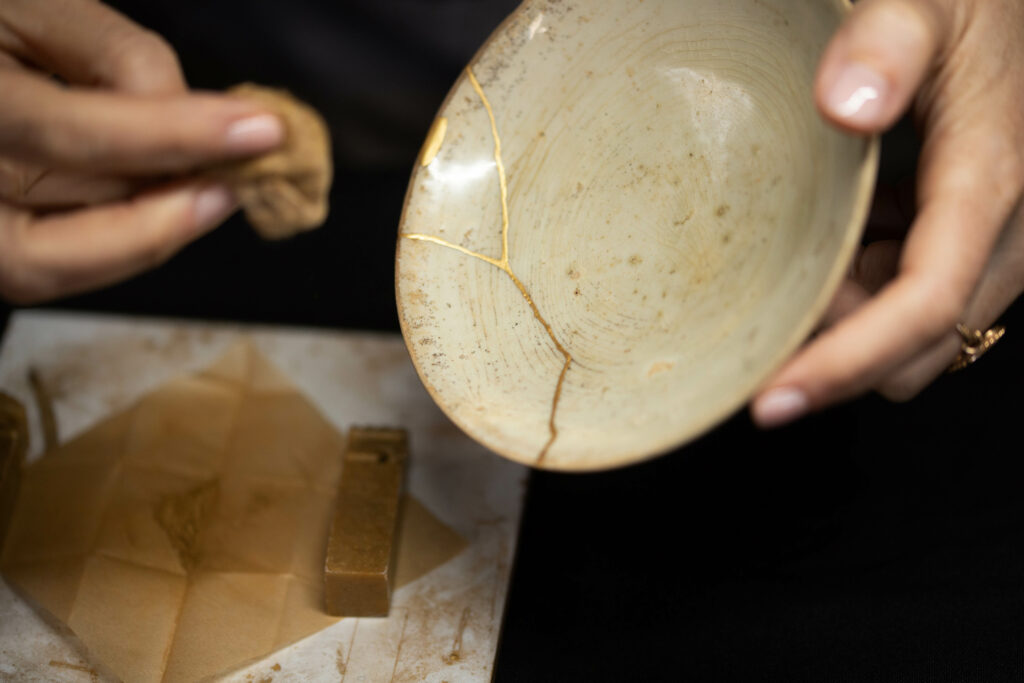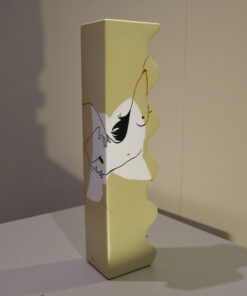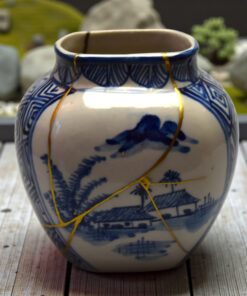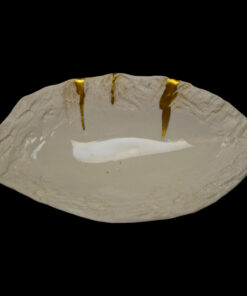The art of kintsugi, that elegant process of repairing broken ceramics with gold or other precious metals, reveals an unsuspected depth when we focus on the different types of metallic powders used. Among these, keshifun and marufun take pride of place, each adding a unique dimension to the final work.

Keshifun: a subtle, elegant powder
Keshifun, literally “erased powder”, is distinguished by its extreme finesse. This almost impalpable gold powder offers a delicate, subtle finish. When applied to fracture lines, it creates a luminous veil that underlines the repaired fragility of the object. Keshifun is particularly appreciated for its silky effect and its ability to blend harmoniously with ceramics, giving the restored object a timeless allure.
Marufun: a shiny, resistant powder
In contrast to keshifun, marufun is characterized by its larger grain size. This denser gold powder produces a shiny, resistant finish. Marufun is often used for larger areas or to create relief effects. It adds visual depth to the work and enhances the play of light on the ceramic surface.
The Master Craftsman’s Choice
The choice between keshifun and marufun is an artistic decision that depends on many factors:
The nature of the piece to be restored: A fine, delicate ceramic will be enhanced by the finesse of keshifun, while a more robust piece will be able to withstand the brilliance of marufun. The desired effect: If the aim is to create a discreet, elegant piece, keshifun is the preferred choice. On the other hand, if you want to highlight the repairs and create a striking contrast, marufun will be more suitable. The customer’s wishes: The final choice, of course, lies with the object’s owner, who expresses his or her aesthetic preferences.
As a kintsugi craftsman, I put all my expertise at your service to help you choose the metal powder best suited to your piece and your expectations. Each restoration is unique and deserves special attention.
-
 “Hot Voltige” Vase: Rebirth in Gold and Ink
“Hot Voltige” Vase: Rebirth in Gold and Ink -
 White vase with kintsugi and yobitsugi1 750 € VAT excl.
White vase with kintsugi and yobitsugi1 750 € VAT excl. -
 White and blue vase with chinese landscape1 150 € VAT excl.
White and blue vase with chinese landscape1 150 € VAT excl. -
 Porcelain canapé plate250 € VAT excl.
Porcelain canapé plate250 € VAT excl.




